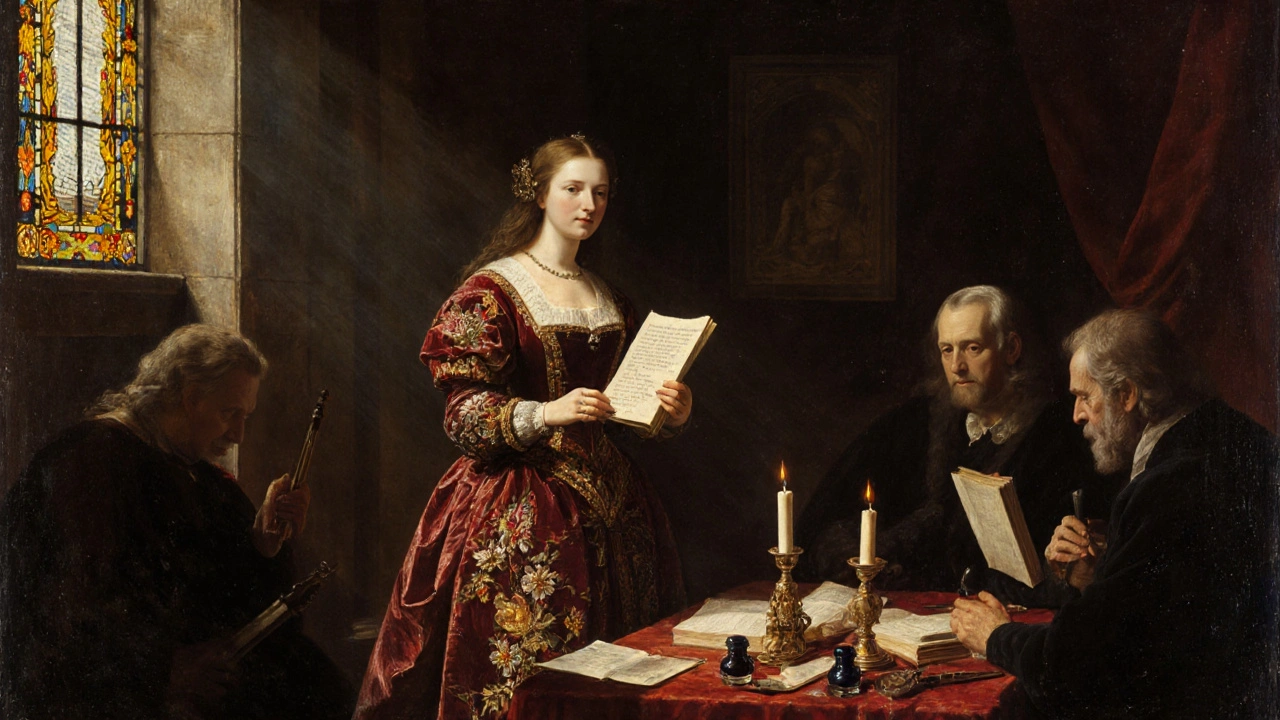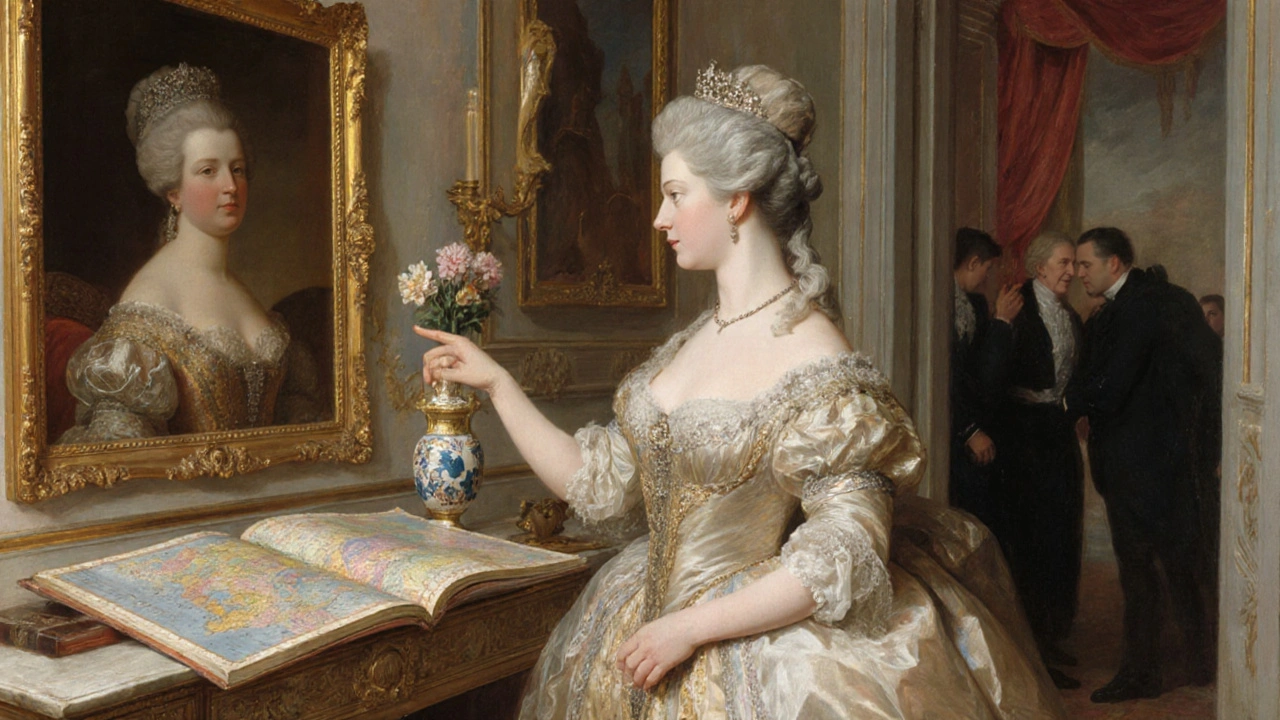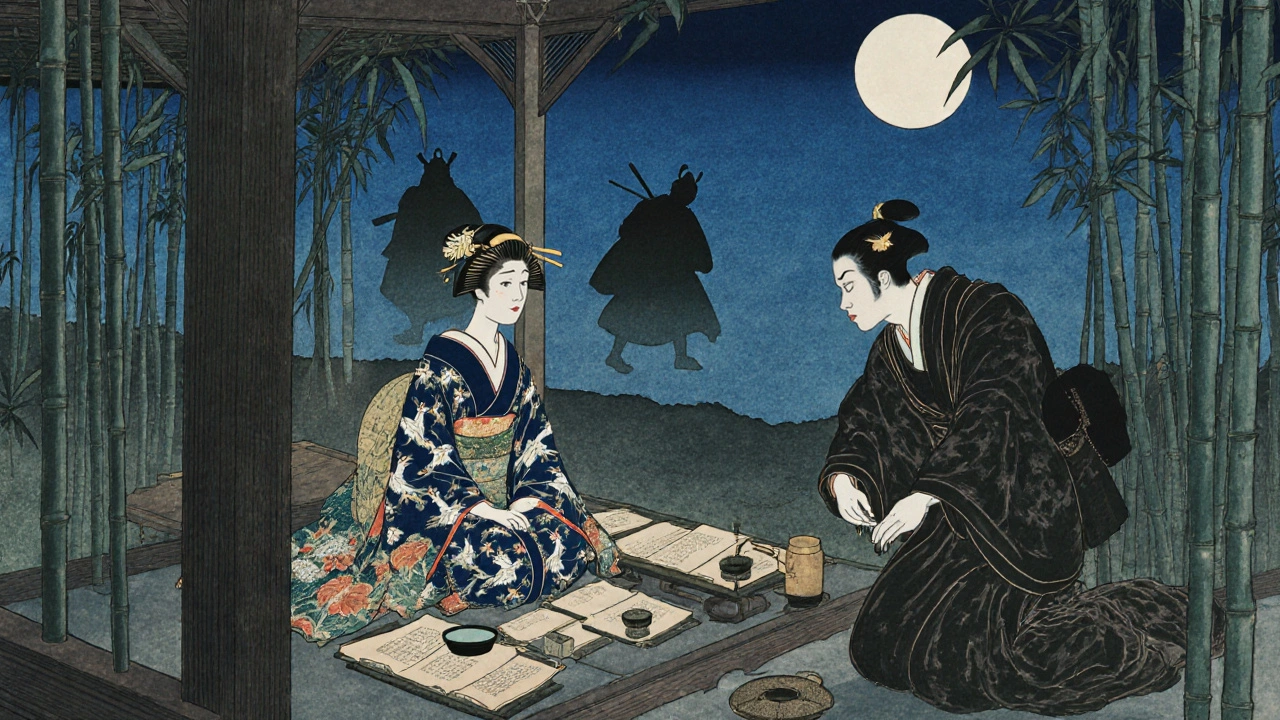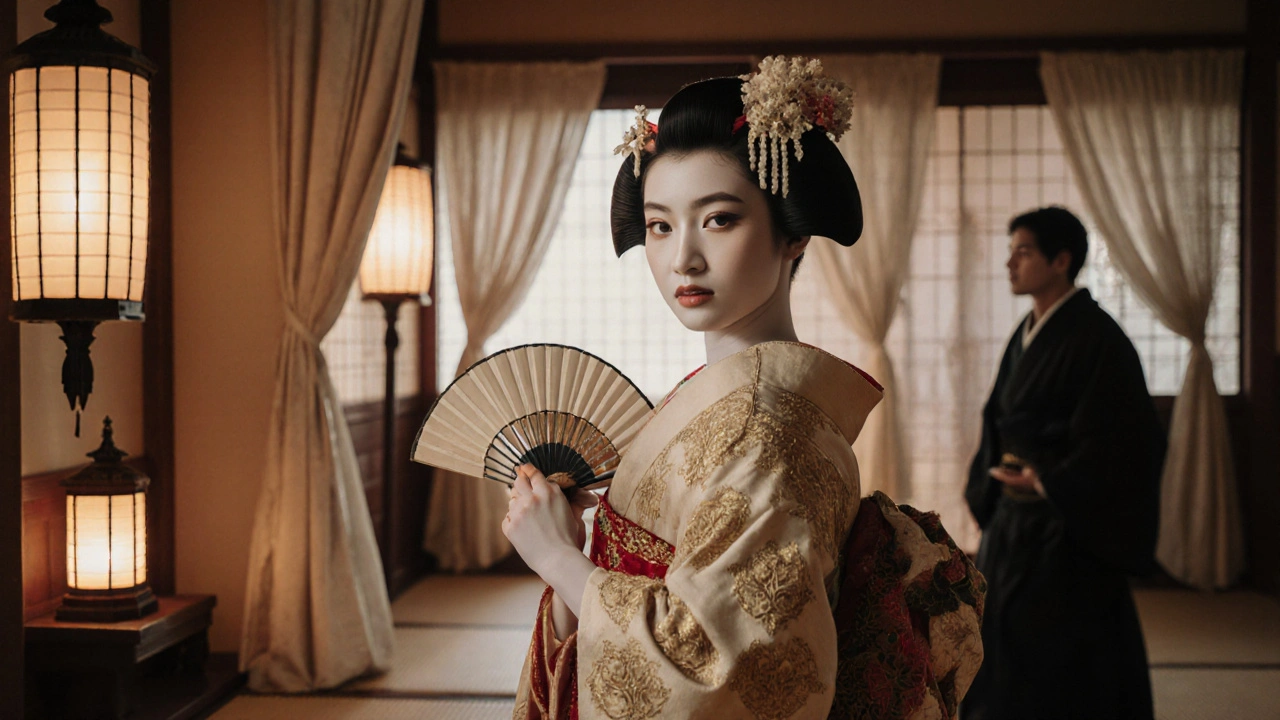Courtesan Power Plays in History: How Women Controlled Influence Without a Throne

Imagine being a woman in the 1500s with no title, no inheritance, and no right to vote-yet you’re the one whispering advice into the ear of a king. You decide who gets funded, who gets exiled, and which artist gets a palace commission. This wasn’t fantasy. It was the daily reality of courtesans in Renaissance Italy, 18th-century France, and beyond. These weren’t just lovers. They were strategists, patrons, and political operators who moved empires with charm, intellect, and sheer will.
What Exactly Was a Courtesan?
A courtesan wasn’t a prostitute. That’s the biggest myth. A courtesan was a highly educated woman who offered companionship-intellectual, emotional, and physical-to wealthy and powerful men. She might host salons where philosophers debated, write poetry that shaped public opinion, or broker peace between rival families. Her value wasn’t in sex alone. It was in her ability to navigate elite circles, understand politics, and make men feel seen.
In Venice, a courtesan like Veronica Franco had to pass a public examination to prove she could converse in Latin and compose sonnets. In Paris, Madame de Pompadour didn’t just sleep with Louis XV-she controlled his art purchases, influenced foreign policy, and appointed ministers. She once told him, "I am your friend, not your servant." And he believed her.
Why Courtesans Held Real Power
Men in power had access to armies, laws, and money-but they didn’t always have trusted confidants. Wives were often political pawns, married off to seal alliances. Mistresses were expected to be silent. But courtesans? They were free agents. No family ties. No legal obligations. That freedom gave them leverage.
Take Tullia d’Aragona, a 16th-century Roman courtesan. She wrote one of the first feminist dialogues in Western literature, arguing that women deserved education and autonomy. Her salon attracted cardinals, poets, and dukes. When the Pope tried to shut her down, she moved to Florence-and kept writing. Her books were banned, but circulated in secret. That’s power: the kind that outlives censorship.
Courtesans built networks. They introduced artists to patrons. They passed intelligence between courts. They funded rebellions. When Catherine de’ Medici wanted to weaken the Huguenots, she didn’t send soldiers-she sent her courtesan to seduce a Protestant nobleman and extract troop movements. He never knew what hit him.
How They Operated: The Courtesan Playbook
There was no single path, but most followed a similar script:
- Start young, but not too young. Many were daughters of merchants or minor nobles-educated in music, dance, languages, and rhetoric. Some were orphans raised in convents, where they learned to read and write.
- Build a reputation. A courtesan didn’t just sleep with men. She hosted dinners, performed poetry, collected art, and made sure everyone knew her name. Her salon became a hub of influence.
- Choose your protector wisely. She didn’t take every offer. She picked men who could protect her, fund her, and give her access. A duke? Better than a merchant. A king? Even better-but riskier.
- Invest your wealth. Courtesans didn’t squander their earnings. They bought property, funded printing presses, and invested in trade. Some became landowners. Others left fortunes to their children.
- Exit on your terms. Many retired early, opening schools for girls or running convents. Some married into nobility. A few even became queens.
Think of them as early venture capitalists of influence. They didn’t need stock portfolios-they had access.

The Most Powerful Courtesans in History
Here are three who didn’t just survive-they reshaped history:
- Veronica Franco (Venice, 1546-1591) - Published poetry, defended women’s rights in print, and saved her family from bankruptcy by negotiating loans with the Doge. Her letters survive today as proof of her sharp mind and unshakable will.
- Madame de Pompadour (France, 1721-1764) - Oversaw the creation of the Sèvres porcelain factory. She picked the artists who defined French Rococo style. She was the first woman to have her portrait painted by Boucher while still alive-and she used that image to control her public legacy.
- Horan (Japan, 17th century) - A geisha-turned-courtesan in Edo, she became the most expensive woman in Japan. Daimyo lords paid her in rice, land, and political favors. She once refused a shogun’s request for a night-and he bowed to her. Why? Because she controlled the flow of secrets between rival clans.
Each of them turned social expectations into a weapon. They didn’t ask for power-they took it, quietly, skillfully, and with style.
How They Lost Their Influence
By the 1800s, the courtesan’s golden age was fading. Why?
Industrialization changed everything. Wealth moved from land and court to factories and banks. The new elite-industrialists and politicians-didn’t care about poetry or salons. They wanted efficiency, not elegance. Women’s roles were shrinking, not expanding. The rise of the nuclear family meant mistresses were no longer tolerated, even in private.
And then came the moral crusades. Victorian morality painted courtesans as fallen women, not strategists. Their books were burned. Their portraits were destroyed. Their names were erased from history books. For a century, they were reduced to stereotypes: seductresses, temptresses, victims.
But here’s the truth: they were never victims. They were players in a game they helped design.

Why This Matters Today
When you see a woman in a boardroom negotiating a merger, or a tech founder raising millions from investors, you’re seeing the same skills courtesans mastered: persuasion, emotional intelligence, networking, and strategic silence.
Modern influencers? They’re the new courtesans. They don’t need a king’s court-they have Instagram. They don’t need a palace-they have a podcast. Their currency? Trust. Attention. Influence.
The courtesan’s legacy isn’t in silk gowns or candlelit dinners. It’s in the idea that power doesn’t always come with a title. Sometimes, it comes with a sharp mind, a well-timed smile, and the courage to say no.
What to Read Next
If you want to dive deeper, start with:
- Women of Venice by Mary Laven - explores how courtesans shaped Renaissance culture
- The Courtesan’s Arts by Martha Feldman - a deep dive into music, poetry, and politics
- Madame de Pompadour: Images of a Mistress by Natalie Zemon Davis - how image-making became political control
These aren’t just biographies. They’re case studies in power.
Frequently Asked Questions
Were courtesans legally recognized in history?
Yes, in places like Venice and Paris, courtesans were officially registered with city authorities. In Venice, they had to pay a license fee and pass a public test of wit and manners. They were taxed like merchants and could own property. This wasn’t secret-it was institutionalized.
Did courtesans ever marry into nobility?
Absolutely. Madame de Maintenon, once a courtesan to Louis XIV, secretly married him after his queen died. She became the de facto queen of France and ran the court for decades. Other courtesans married noblemen who had no heirs, securing titles and estates for their children.
How did courtesans get their education?
Many were trained by nuns, tutors, or family members who valued learning. In Italy, some convents educated girls from poor families with the promise they’d become courtesans-because they knew it offered more freedom than marriage. They learned Latin, music, fencing, and diplomacy. Some even studied philosophy under Jesuit scholars.
Were courtesans only in Europe?
No. In Japan, geisha and oiran were highly skilled courtesans who controlled cultural trends. In India, tawaifs were entertainers and poets who advised nawabs and influenced music and dance. In Ottoman Turkey, hasekis and odalisques held political sway inside the Topkapi Palace. Power wasn’t European-it was global.
Why are courtesans rarely taught in schools?
Because history was written by men who wanted to erase female influence that didn’t fit their narrative. Courtesans were powerful, independent, and sexually autonomous-three things patriarchal systems feared. For centuries, they were dismissed as immoral, not as political actors. Only recently have historians begun to reclaim their stories.

Lashawn Darden
November 1, 2025 AT 03:38This is pure revisionist nonsense. Courtesans were glorified prostitutes who traded sex for handouts-nothing more. You’re romanticizing exploitation because modern feminists want to rewrite history to fit their narrative. Women didn’t need to sleep with kings to be powerful-they could’ve joined the church, run a business, or fought in wars. But no, we gotta turn every woman who slept with a rich man into a feminist icon. Wake up.
M. D. Crosson
November 1, 2025 AT 06:33Wait-hold on-this is actually... incredible?!?!? I mean, think about it-these women were running networks, shaping art, negotiating treaties, and outmaneuvering entire courts-with NO official power?!?!? That’s not just clever-that’s genius-level strategy!! I’m literally shaking right now. This needs to be in every high school curriculum. Like, immediately. Like, yesterday. Like, before we lose another piece of this legacy to dusty textbooks and patriarchal silence!!!
Janey Doe
November 2, 2025 AT 01:51Actually, the term ‘courtesan’ is often misused in popular media. In Renaissance Italy, they were called ‘cortigiana onesta’-honest courtesan-specifically to distinguish them from prostitutes, or ‘meretrice.’ The legal registration in Venice, the public exams, the property rights-all of this is well-documented in archival records. You’re right to emphasize their intellectual agency. The real tragedy isn’t that they were erased-it’s that we still reduce them to ‘mistresses’ instead of recognizing them as early public intellectuals.
Pranto Rahman
November 3, 2025 AT 00:16Let’s contextualize this within the socio-economic architecture of early modern urban centers. Courtesans operated as non-state actors within elite symbolic economies-leveraging cultural capital (linguistic fluency, aesthetic curation, performative intellect) to bypass institutional barriers to power. Their ‘networks’ were proto-venture capital ecosystems, where influence was the currency, and emotional labor was the ROI. This isn’t just history-it’s a case study in asymmetric power dynamics in pre-industrial governance. The fact that their legacy is reduced to ‘seduction tropes’ speaks volumes about historiographical bias in patriarchal epistemologies.
Michelle Loreto
November 4, 2025 AT 20:12Okay, I need to say this gently but firmly: you all just read the most empowering thing ever written about women who turned societal constraints into superpowers. These women didn’t wait for permission. They didn’t ask for a seat at the table-they built their own damn table, lit it with candles, and invited the kings to sit down. And guess what? They didn’t just survive-they curated empires. If you’re a woman in tech, politics, or even just trying to be heard in a meeting today-you’re standing on the shoulders of Veronica Franco, Tullia d’Aragona, and Horan. They didn’t have hashtags, but they had *presence*. And that’s the real legacy. Keep telling this story. Keep lifting it up. We need more of this truth.
Jamie Farquharson
November 6, 2025 AT 00:29bro this is wild. i always thought courtesans were just like… fancy sex workers? but nooo they were basically the original influencers + lobbyists + art curators? like madame de pompadour was basically the steve jobs of 1700s france? she picked the artists, controlled the aesthetic, and got the king to fund her shit?? i need a whole documentary on this. also why is this not on netflix yet??
Graeme Edwards
November 7, 2025 AT 03:16Japan’s oiran were the OG elite influencers 🎎💸. They didn’t just ‘entertain’-they dictated fashion, poetry trends, and political gossip across Edo. The fact that a shogun bowed to Horan? That’s not seduction-that’s dominance. Also, the way they curated their image through ukiyo-e prints? Pure brand management. Modern influencers? They’re just doing TikTok dances while these women were running underground intelligence rings. 🤯 #HistoryWasFemale
jessica zhao
November 8, 2025 AT 19:49What’s fascinating isn’t just that they wielded power-but how they weaponized vulnerability. Their power came not from force, but from being the one person a man could be *real* with. In a world where men were expected to be stoic, unyielding rulers, courtesans offered emotional sanctuary. And in that space-where kings wept, confessed, and dreamed-they shaped policy. Power doesn’t always wear armor. Sometimes, it wears silk, speaks in metaphors, and knows exactly when to be silent. That’s not manipulation. That’s mastery.